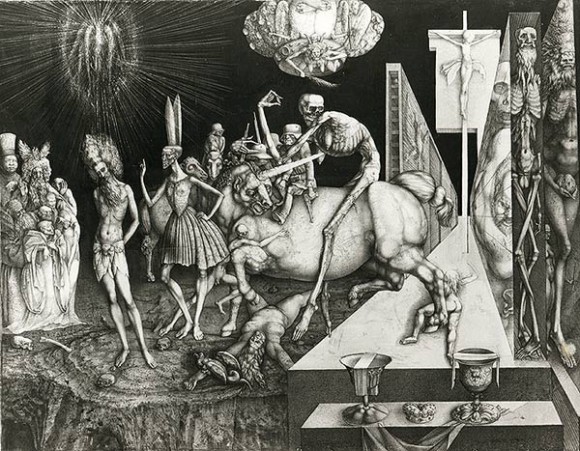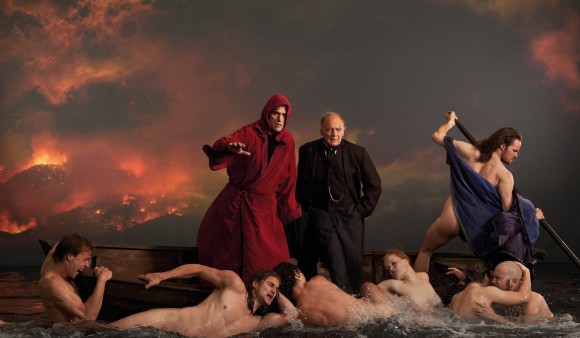- CATEGORIES |
- INTERVIEWS |
- MUSIQUE |
- HARDCORE |
- INDUS/NOISE |
- SYNTH/WAVE |
- ELECTRO/TECHNO |
- PUNK/ROCK |
- INDIE/POP |
- RAP |
- METAL |
- CINEMA |
- FILMS NOUVEAUX |
- FILMS 00’s |
- FILMS 90’s |
- FILMS 80’s |
- FILMS 70’s |
- FILMS ANCIENS |
- LECTURES |
- BIOGRAPHIE |
- LITTERATURE |
- PHILOSOPHIE |
- REVUE |
- SOCIOLOGIE |
- ART |
- PLAYLISTS |
- PRESSE |
- VIDEOS |
- Contact |
Les Prédicateurs et les Compatissants
« Il y a des prédicateurs de la mort et la terre est pleine de ceux à qui il faut prêcher de se détourner de la vie.
La terre est pleine de superflus, la vie est gâchée par ceux qui sont beaucoup trop nombreux. Qu’on les détourne de la vie, ces gens, au moyen de la « vie éternelle » !
« Jaunes » : c’est ainsi que l’on nomme les prédicateurs de la mort, ou « noirs ». Mais, moi, je veux vous les montrer sous d’autres couleurs.
Il y a ceux qui sont terribles, qui promènent en eux la bête de proie et n’ont pas de choix, à moins que ce ne soient les plaisirs ou la mortification. LIRE LA SUITE
Février du cinéma français
– Marion et Ben, trentenaires, font connaissance sur Tinder. C’est à peu près tout ce qu’ils ont en commun ; mais les contraires s’attirent, et ils décident au petit matin de leur rencontre de partir ensemble en vacances malgré l’avis de leur entourage. Ils partiront finalement… en Bulgarie, à mi-chemin de leurs destinations rêvées : Beyrouth pour Marion, Biarritz pour Ben.
– Alain dirige une célèbre maison d’édition, où son ami Léonard, écrivain bohème publie ses romans. La femme d’Alain, Séléna, est la star d’une série télé populaire et Valérie, compagne de Leonard, assiste vaillamment un homme politique. Les relations entre les deux couples vont se compliquer.
– La vie de Wanda va à vau-l’eau depuis qu’elle a une phlébite. Cette mannequin jambes se retrouve au chômage technique. En vacances à la montagne, elle ne peut pas skier. Son mari ne la comprend plus. Ses enfants non plus. Mais son vrai problème porte un nom : le syndrome du moniteur de ski. LIRE LA SUITE
UGC Illimité 11
OUI
3 Billboards, Martin McDonagh.
Der Hauptmann, Robert Schwenke.
Dogman, Matteo Garrone.
First Reformed, Paul Schrader.
Hereditary, Ari Aster.
Phantom Thread, Paul Thomas Anderson.
Sophia Antipolis, Virgil Vernier.
The House That Jack Built, Lars Von Trier.
Under The Silver Lake, David R. Mitchell.
Utoya, Erik Poppe.
LIRE LA SUITE
A heavenly dose of reality
« I loved how the Smiths cnnected with their audience and I enjoyed watching their emergence. One reason for my delight was the way they challenged the mainstream version of what great pop music was. To me, they seemed like the antithesis of the likes of Duran Duran. As in every era, episodes of Top of the pops featured a mix of music and you’d occasionally get a real gem, perhaps two, but generally in the early 1980s, the producers and the presenters turned each episode into a headless, over-lit and cheesy office party. In this context, when the Smiths were on the show performing ‘This Charming Man’ or ‘What Difference Does It Make ?’ they were like gatecrashers from another planet, bringing with them a heavenly dose of reality.
When I interviewed John Taylor of Duran Duran, I told him all this, even though I felt a big mean doing so. I did know that when he was a teenager in the 1970s, he’d liked a lot of the same music Morrissey and Marr had, including Bowie and Mick Ronson, of course, but their tastes and their bands had diverged. I told him that every time I got a glimpse of a Duran Duran video, with the band and a load of half-dressed women all aboard a yacht in the Indian Ocean or whatever, in an era of rising youth unemployment and the miners’ strike, I just couldn’t cope. It was a weird juxtaposition. I told him there’s a lot I like about Duran Duran now, but back then we needed the Smiths. John was very understanding and very gentlemanly about it; ‘I know, Dave. I appreciate what you’re saying. »
Sonic Youth Slept On My Floor, Dave Haslam, 2018.








